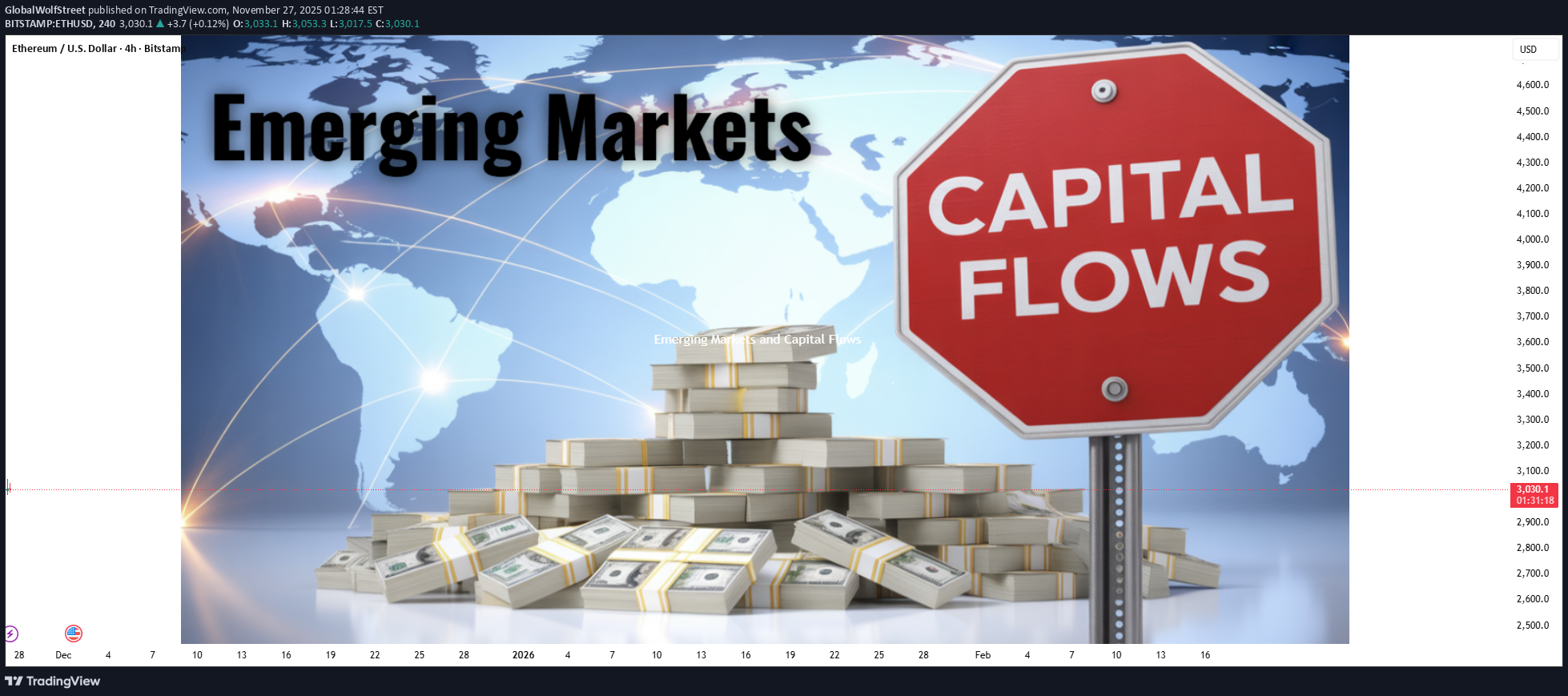تحلیل تکنیکال GlobalWolfStreet درباره نماد ETH در تاریخ ۱۴۰۴/۹/۶
جریان سرمایه در بازارهای نوظهور: فرصتها، تهدیدها و رازهای جذب پول جهانی

1. Understanding Emerging Markets Emerging markets are economies transitioning from low-income, resource-driven systems to more advanced, industrialized, and service-oriented structures. They typically share the following characteristics: Key Features High economic growth rates compared to developed nations. Rapid urbanization and industrial expansion. Significant reliance on foreign investment to finance growth. Developing but fragile financial markets—often shallow and prone to volatility. Exposure to global economic cycles, interest rate changes, and commodity price shocks. Growing consumer market, driven by rising incomes and demographic strength. These characteristics make EMs attractive but risky destinations for global capital. 2. What Are Capital Flows? Capital flows refer to the movement of money for investment, trade, or business production across countries. For emerging markets, capital flows are critical because they influence: Exchange rates Interest rates Stock and bond markets Inflation Economic growth Financial stability Capital inflows bring liquidity and strengthen markets, while outflows pressure currencies and reduce investment capacity. 3. Types of Capital Flows in Emerging Markets Global investors participate in EMs through several channels: A. Foreign Direct Investment (FDI) FDI involves long-term investments such as setting up factories, acquiring companies, or building infrastructure. It is the most stable form of capital because: It creates employment It brings technology It enhances productivity It is less likely to exit during short-term crises Countries like India, Vietnam, and Mexico have become major FDI destinations due to manufacturing expansions and favourable government policies. B. Foreign Portfolio Investment (FPI) Portfolio flows include investments in: Stocks Bonds Mutual funds ETFs These are short-term and highly sensitive to global interest rates, sentiment, and liquidity conditions. FPI can rapidly enter during bullish periods and exit during uncertainty, making it the most volatile category of capital flows. C. External Commercial Borrowings (ECB) Corporates or governments borrow from international lenders to fund: Infrastructure projects Expansion plans Government spending While ECB helps meet capital needs, excessive borrowing increases external debt vulnerability. D. Remittances Large EMs like India, Philippines, and Mexico receive significant remittances from workers abroad. Remittances are stable, counter-cyclical, and support domestic consumption. 4. Why Do Capital Flows Move Toward Emerging Markets? Global investors allocate funds to EMs due to: 1. Higher Returns on Investment Emerging markets often offer: Higher GDP growth Better corporate earnings prospects Attractive bond yields In a low-yield world, EM assets become appealing. 2. Demographic Advantage A young population drives consumption growth, expanding market opportunities. 3. Structural Reforms Privatization, tax reforms, digitalization, and financial sector improvements attract long-term capital. 4. Commodity Cycles Resource-rich nations (Brazil, Indonesia, South Africa) attract capital during commodity booms. 5. Currency Appreciation Potential Investors earn not only from market returns but also from appreciating EM currencies during stable periods. 5. What Drives Capital Outflows from Emerging Markets? While inflows bring optimism, outflows can trigger crises. Key drivers include: 1. Global Interest Rate Changes (Especially U.S. Rates) When U.S. Federal Reserve raises interest rates: Dollar strengthens EM currencies weaken Investors shift funds from EM to U.S. Treasuries This “flight to safety” drains EM liquidity. 2. Financial Market Uncertainty Events such as: Emerging market debt crises Stock market corrections Currency depreciation cause rapid portfolio outflows. 3. Geopolitical Risks Wars, political instability, elections, sanctions, or policy unpredictability scare investors. 4. Commodity Price Volatility Commodity exporters suffer when global prices fall, leading to foreign investor exit. 5. Strong U.S. Dollar A rising dollar increases external debt burden for EMs and triggers outflows. 6. Effects of Capital Flows on Emerging Markets Capital flows influence economic conditions in both positive and negative ways. Positive Effects 1. Boosts Investment and Growth Foreign capital funds: Infrastructure Manufacturing Real estate Technology Financial markets This accelerates economic development. 2. Supports Domestic Currency Stable inflows strengthen the currency, reducing import costs. 3. Improves Financial Market Depth Foreign investors increase liquidity in equity and bond markets, making them more efficient. 4. Enhances Global Integration Capital flows link EMs to global markets, improving trade and investment relationships. Negative Effects 1. Currency Volatility Sudden outflows weaken the currency and may cause inflation. 2. Asset Bubbles Excessive inflows inflate stock or real estate prices beyond fundamentals. 3. External Debt Vulnerability Borrowing in foreign currency exposes countries to refinancing risk. 4. Financial Instability Rapid outflows may trigger: Banking crises Balance of payment issues Market crashes Examples include the Asian Financial Crisis (1997) and the taper tantrum (2013). 7. Managing Capital Flows: Policy Tools for Emerging Markets Emerging markets adopt a mix of strategies to handle capital flow volatility: 1. Foreign Exchange Reserves Holding adequate FX reserves helps protect the currency during outflows. 2. Macroprudential Regulations Governments may impose: Limits on external borrowing Controls on short-term capital Banking sector leverage caps These reduce systemic risk. 3. Flexible Exchange Rates Allowing currencies to adjust absorbs external shocks. 4. Fiscal Discipline Lower deficits improve investor confidence. 5. Encouraging FDI Over FPI FDI is stable and long-term; EMs design policies to attract more of it. 6. Bilateral and Multilateral Financing Partnerships with IMF, World Bank, or regional groups provide safety nets. 8. The Future of Capital Flows in Emerging Markets As global financial systems evolve, several future trends are shaping the trajectory of capital flows: 1. Digitalization and Fintech Growth Digital economies like India and Indonesia will attract tech-focused FDI. 2. Nearshoring and Supply Chain Shifts Companies shifting production away from China will benefit economies like Vietnam, Mexico, and India. 3. Sustainable Investing Green bonds and ESG funds are rising, diverting inflows to climate-friendly EM projects. 4. Rising Domestic Capital Markets Local investors are becoming strong players, reducing dependence on foreign flows. Conclusion Emerging markets and capital flows are deeply interconnected. EMs depend on global capital for growth and development, while investors depend on EMs for higher returns. However, this relationship is inherently volatile. Inflows boost growth, strengthen currencies, and deepen financial markets, but outflows can cause instability, pressure exchange rates, and trigger crises. Managing capital flows through sound policies, stable governance, and long-term reforms is essential for sustained growth. As the world undergoes technological transformation, shifting supply chains, and changing geopolitical dynamics, emerging markets will continue to be central to global investment flows—offering both opportunities and risks in equal measure.
